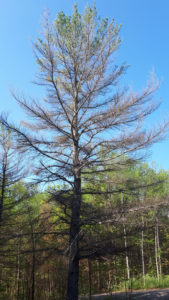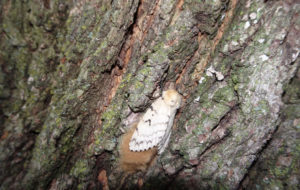Controlling the Impact of LDD on Trees in Ontario
One of the biggest challenges facing Ontario’s urban forests in 2021 is the damage caused by the LDD moth (Lymantria dispar dispar), previously referred to as “Gypsy moth”. This invasive species’ exponential growth in Ontario is putting urban forests at risk of permanent damage. In 2019, LDD affected approximately 50,000 hectares of trees in Ontario1. By 2020, almost 500,000 hectares were affected – an estimate which excludes municipalities in the GTA1. With that in mind, we can assume the damage was much higher.
What trees are vulnerable to the LDD moth?
LDD moth will feed on almost any deciduous and coniferous tree during severe outbreak years, as we have experienced in 2020 and 20211. If coniferous trees are stripped of their needles, this usually suggests the end for the tree. If deciduous trees lose their leaves, they can survive by producing more leaves later in the season. However, loss of leaves is not the only stress urban trees confront; often they are already facing urban stress factors like soil compaction, drought, and pollution. Therefore, the added stress of LDD damage can prove to be fatal for many deciduous trees as well.
How to protect trees from the LDD moth?
Here are some suggestions to protect the trees in your yard, and your community, against LDD:
1. Scrape LDD egg mass(es) from your trees.
LDD egg masses look like buff-coloured patches on trees and are about the size of a looney. On average, they contain around 600 eggs. Reducing the number of egg masses can help reduce the LDD population of an affected tree, allowing it to retain some leaves for the growing season. This can be started in the fall. Watch this tutorial to learn how.
buff-coloured patches on trees and are about the size of a looney. On average, they contain around 600 eggs. Reducing the number of egg masses can help reduce the LDD population of an affected tree, allowing it to retain some leaves for the growing season. This can be started in the fall. Watch this tutorial to learn how.
2. Wrap tree trunks with burlap. Banding around the trunks with the burlap flapped over can help contain the larvae for daily removal. Some communities are asking residents to help, like the Town of Newmarket, by providing free burlap to put on private trees.
3. Water stripped trees. If trees have been stripped of their leaves, ensure they are getting sufficient watering to help them grow a second set of leaves in the summer. This is especially important if there are drought conditions present.
4. Survey the egg mass(es). Egg mass surveys are important to determine the extent of next year’s infestation and establish what further actions are required to manage the infestation.
A Community Effort
It is important to seek assistance in controlling this imported pest to prevent successive defoliations of trees. If you notice that egg mass numbers are high, coordinate with neighbours in the fall to seek help from tree services and aerial applicators. Your action in the fall is crucial to minimize the impacts of the egg hatch the following spring and reduce the overall impact of LDD.
Although the media has brought attention to the pest, the conversation is often about what it looks like and its life cycle, and less so on the impact it has on urban trees. Unfortunately, this impact can be significant. In some cases, it only takes one to two years of infestation in a deciduous tree to weaken it to a point of mortality.
If not addressed, LDD could change the tree population in your neighbourhood within a few short years. As a community, we need to work together to prevent that. Introducing actions like egg mass counting to assess the risk to your trees and implementing graduated activities can help protect trees in your community.
LDD Resources
- Burgess Wood Property Owners Association (Eastern Ontario)
- Veteran Tree Incentive Program (Southern Ontario)
Reference:
1. Ontario Ministry of Natural Resources: https://www.ontario.ca/page/gypsy-moth
Back to all articles